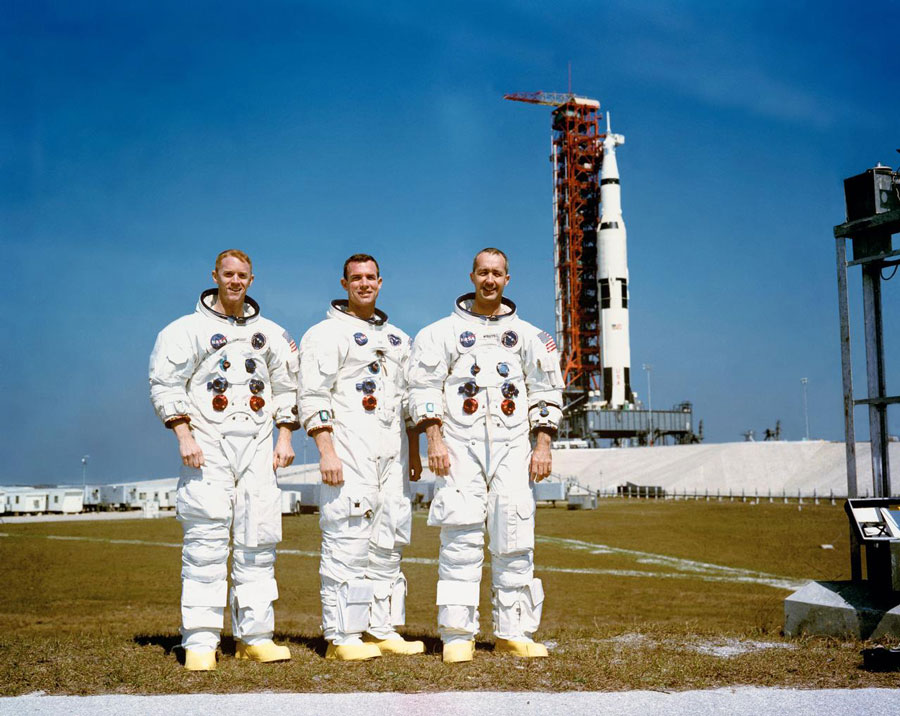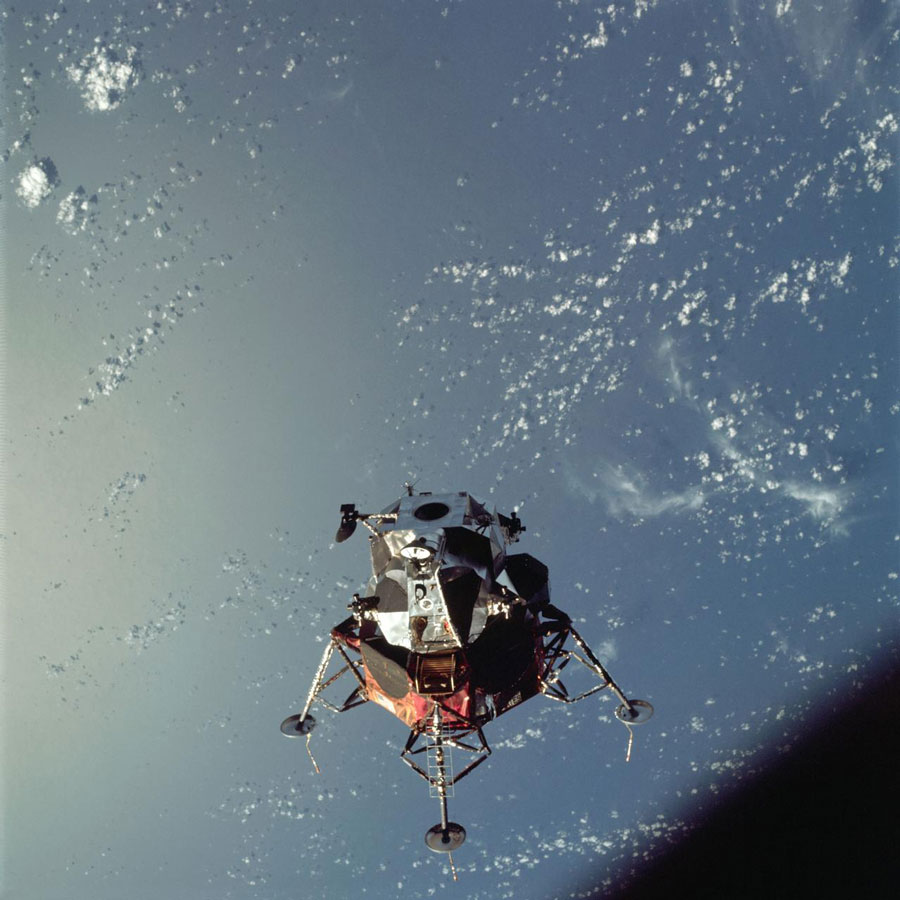Apollo 9: Spider's First Mission
Published: March 1 2019 Updated: March 11 2025

Each Apollo mission played an important role in the program. The success of the first four crewed missions would determine whether Apollo 11 could land safely on the Moon. Apollo 9 was one of those vital early missions, since it was the first to test the lunar module as a self-sufficient spacecraft.
It has been 50 years since Apollo 9 launched on March 3, 1969, from Kennedy Space Center, Florida carrying Commander James McDivitt, Command Module Pilot David Scott and Lunar Module Pilot Russell Schweickart.

The mission, which lasted for ten days, involved the first test of a complete Apollo spacecraft: command and service module, lunar module and Saturn V rocket. During the mission, the crew tested the lunar module and successfully performed a rendezvous and docking with the command module. The results of this mission proved the lunar module was ready to go to the Moon on Apollo 10. Here are some more interesting facts about the Apollo 9 mission:
- The entire mission took place in low-Earth orbit.
- February 28 was the initial launch date, but the crew developed sore throats and congestion, so NASA rescheduled it to March 3.
- The crew nicknamed the Apollo command module Gumdrop because of the way it looked in its blue wrappings during shipment.
- They also nicknamed the lunar module Spider because of its spider-like appearance.
- Apollo 9 was the second launch of a Saturn V rocket and the last splashdown landing to happen in the Atlantic Ocean.
- The crew made two telecasts to Earth, showing interior views of the lunar module.
- Russell Schweickart tested the new Apollo spacesuit, the first to be equipped with its own life support system. Unfortunately, Schweickart got sick during the mission and was not able to finish testing the suit.

You can always learn more about the Apollo Program and see real Apollo spacecraft at the Apollo/Saturn V Center. Learn more about the Apollo Program and join the visitor complex as it celebrates the Apollo Program’s 50th Anniversary.